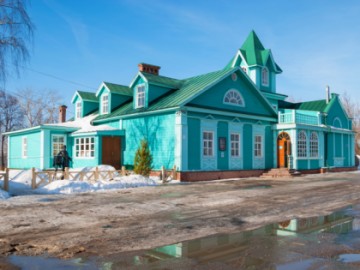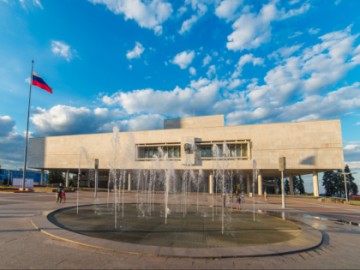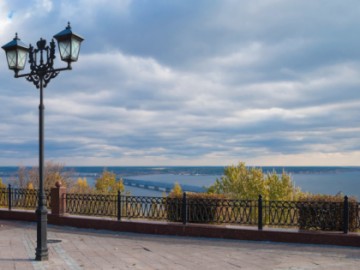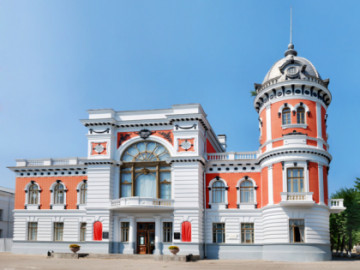Karamzin Public Garden and a «Cast-Iron Woman»
In the 1880s, the Karamzin Public Garden in Ulyanovsk became suddenly famous in the West: American biologists, who traveled along the Volga, discovered a rare wild pear, unknown in the United States, among the trees in a park. They mentioned the tree in their commentaries on this trip, after which gardeners from the United States and Western Europe started to send requests to Simbirsk asking for the cuttings from the Karamzin garden.
The park was laid out in 1866 around the monument to the reformer of the Russian language Nikolay Karamzin, a native of Simbirsk. It was absolutely necessary for the park to appear: a large fire in 1864 destroyed a lot of green space in the city, so the townspeople dreamed of new gardens and parks. Today there are over three hundred trees and bushes in the park, and half of these plantings are lilacs which were adored by Karamzin. The park, furnished with benches, is especially crowded in May-June, when people come here to admire the blooming lilac. The monument to Karamzin often confuses those who see it for the first time, since the granite pedestal is crowned not by the writer himself, but a woman’s figure. No wonder that the monument was popularly called a "cast-iron woman" at first. In fact, this woman is Clio, the Muse of history: indeed, Karamzin was not only a writer, but also a historian and traveler. The "cast-iron woman" holds a trumpet in one hand - to notify of the glory of Russia, and the other hand is laid on the "History of the Russian state" - the main work of Karamzin. The bust of Karamzin himself is placed in the niche of the pedestal.


































